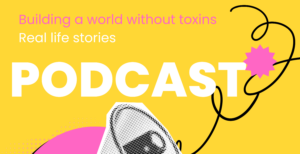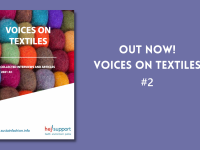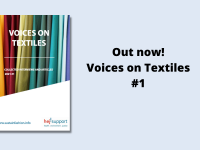Hemp Fabrics

While cotton is the most abundant natural fiber, other plant-based natural fibers have become increasingly popular and accounted for a market share of approximately 6% in 2019.1 One such fiber is hemp, which is derived from the stalks of the Cannabis sativa plant.2
Unfortunately, the psychoactive qualities of Cannabis sativa have led to a generalized stigma and consequential production restrictions in many countries, despite the fact that these qualities are very minimal when the plant is cultivated for the purpose of textile production.2
Currently, China is the dominant producer of hemp for the purpose of textiles. With ongoing production restrictions being lifted in other countries, such as the United States, there are many emerging initiatives developing throughout the world.1
For the purposes of textile production, the bast fibers that compose the outer layer of the Cannabis sativa stalk are removed and processed to create raw hemp into a weavable fiber, which is spun into yarn to create textiles.2
Retrieved from: https://sewport.com/fabrics-directory/hemp-fabric
Hemp has several properties which make it suitable for use in clothing production, including heat resistance, breathability and water absorbency.3 One unique positive attribute of hemp fabric is its ability to block ultraviolet rays.3 It is also hypoallergenic, non-toxic and very durable; for example, a hemp shirt can last two to three times as long as compared to one made of cotton.2
There are also some less desirable qualities with hemp fabrics, such as their ability to wrinkle easily and having a corase texture.3 For enhancing purposes, hemp may be blended with other fibers, such as cotton or silk, to produce fabrics that are softer from the outset.2,3
When considering the pros and cons of hemp fabric, its environmental impacts are an important area for consideration. Comparatively, hemp is much less water- and land-intensive than cotton.4 Hemp plants do not require chemical herbicides for growth due to their dominating nature and are also natural pest reducers.4 Additionally, hemp contributes to soil detoxification and regeneration, returning the majority of nutrients used in a positive feedback loop.3,4
Although these are positive sustainable qualities, the overall environmental footprint of hemp-based textile production depends ultimately on how it is processed after the plant has fully grown. While hemp textiles can be produced organically through a chemical-free mechanical process, many manufacturers now use a chemical-based processes; these potentially harmful chemicals include heavy caustic sodas, chlorine and the heavy metals often found in synthetic dyes.3,4 Hemp fabrics produced through chemical manufacturing are often labelled as ‘hemp viscose’, as the production process is very similarly to that of viscose production.4
Overall, hemp is a sustainable textile fiber with good potential for market growth. Moving forward, it is important for consumers to be aware of the various harmful processes used to make hemp-based textiles and their related environmental impacts to allow for better decision making and ultimately to support brands, companies and initiatives which are producing hemp products through chemical-free sustainable processes.
References
- Opperskalski, S., Siew, S., Tan, E., & Truscott, L. (2020). Preferred fiber & materials market report 2020. Textile Exchange. Retrieved from: https://textileexchange.org/wp-content/uploads/2020/06/Textile-Exchange_Preferred-Fiber-Material-Market-Report_2020.pdf
- Hodakel, B. (2021, February 14). What is hemp fabric: Properties, how it’s made and where. Sewport. Retrieved from: https://sewport.com/fabrics-directory/hemp-fabric
- Ross, C.B. (2014, December 2). Series on fibres: Turning hemp into fabric. The Sustainable Fashion Collective. Retrieved from: https://www.the-sustainable-fashion-collective.com/2014/12/02/hemp-fibre-fabric-eco-benefit/
- Hymann, Y. (2020, September 25). Material guide: How sustainable is hemp fabric? Good On You. Retrieved from:https://goodonyou.eco/material-guide-hemp/






